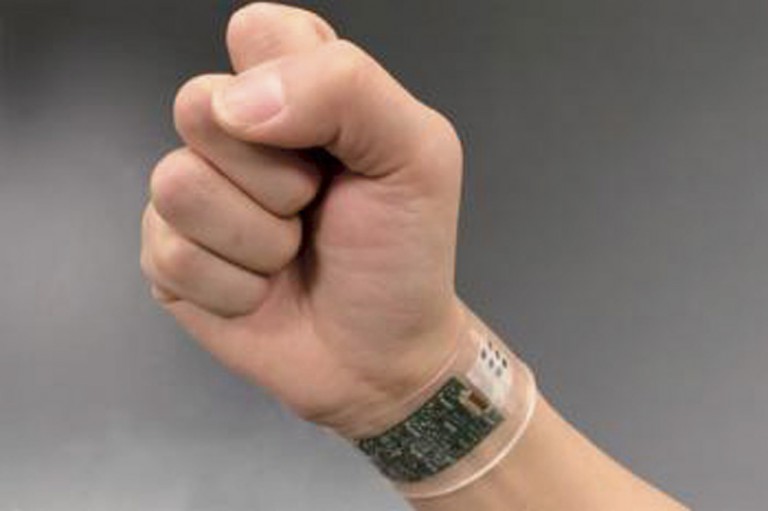
Rishika Kenkre
Staff Writer
Physicians and pharmacists can use saliva and urine to analyze patients’ physiological conditions, but none of these materials are constantly portable or can be monitored on a daily basis. Ali Javey, an electrical engineer and professor of electrical engineering and computer sciences at the University of California, Berkeley, has developed a sweat sensor that communicates data it has integrated from body sweat. This innovation can help people keep track of certain conditions such as dehydration and fatigue in one’s current status.
Javey collaborated with co-lead authors Wei Gao and Sam Emaminejad, who are postdoctoral fellows of his lab. These three scholars are connected with the Berkeley and Actuator Center and the Material Sciences Division at Lawrence Berkeley National Laboratory.
Although many health monitors have appeared on the electronic market, this is the first system that non-invasively monitors the biochemicals in sweat. It takes sweat apart on a molecular level and gives off the measurements in real time instead of having to wait for it.
While health monitors have exploded onto the consumer electronics scene over the past decade, researchers say this device, reported in the journal Nature, is the first fully integrated electronic system that can provide continuous, non-invasive monitoring of multiple biochemicals in sweat.
“This is very interesting work,” said Kim Turner, professor and chair of the Mechanical Engineering Department, who shared her thoughts with The Bottom Line. “The sensors work in various ways, but the true breakthrough in this paper is the integration of traditional electronics with flexible sensors, developing a reliable way to calibrate these sensors with temperature (as the body temperature at the skin interface changes a lot with sweat cooling/evaporation) so that they give reliable measurements.”
This prototype created by Javey and his team has added five sensors to a circuit board. Even though the bandage should be replaced often, the circuit board is reusable. The sweat band is an adjustable sensor bandage that wraps around the wrist or even the head. It is a Bluetooth-enabled band composed of a panel of sensors for potassium, lactate, glucose and skin temperature.
“Human sweat contains physiologically rich information, thus making it an attractive body fluid for non-invasive wearable sensors,” Javey, the study’s principal investigator, said. “However, sweat is complex, and it is necessary to measure multiple targets to extract meaningful information about your state of health. In this regard, we have developed a fully integrated system that simultaneously and selectively measures multiple sweat analytes, and wirelessly transmits the processed data to a smartphone. Our work presents a technology platform for sweat-based health monitors.”
Creating an easy-to-wear band that electrochemically examines sweat is not an easy task. The sensors have to be made from scratch from their primary chemicals. Another difficulty they overcame was producing electronics that work with the extremely high electrical impedance of the sensors. They had to find out how to take a potentiostat — an electronic that conducts electroanalytical experiments that generally weighs more than two pounds — and still it to the size that it can wrap around one’s wrist. The various sensors can be used to detect the physiological conditions of the user.
With the use of ten integrated circuit chips, the researchers can gather data from the sensors, alter the signals, adjust due to environmental and temperature changes and wirelessly communicate the data to the user. This research team also made an app for mobile phones, “smart” wristbands and headbands that connect to the sensors’ data. Experimenting with volunteers, the researchers had the subjects perform different exercises.
Through collaboration and cooperation, researchers have found that they monitor athlete’s stress and drug levels in the bloodstream.
“The sensor technology is not all new, and is different for each type of sensor,” said Turner.
“The interesting thing here is that they can really monitor athletes in real time, and collect new samples for measurement, and track the results in a relatively accurate manner. This is a great new development that could lead to a number of interesting developments. Sweat is just a first step.”
This device could also have potential applications in diabetes management. In the past, sweat has mostly been collected in a lab setting and analyzed after the fact, so real time monitoring could also open up new avenues of research.










